A day in the life of a United Airlines flight attendant, who woke up before 3 a.m. and ran circles around me for 9 hours
As our flight will begin boarding at 4:50 a.m., I arrive at the airport at 4 a.m. I'm scheduled to meet Bingochea at United's In Flight area, but before that, we both need to go through airport security.

Bingochea has packed enough clothes — rolled, of course — and supplies to last at least four days. "You want to be ready for everything," he tells me. "Anything can happen."
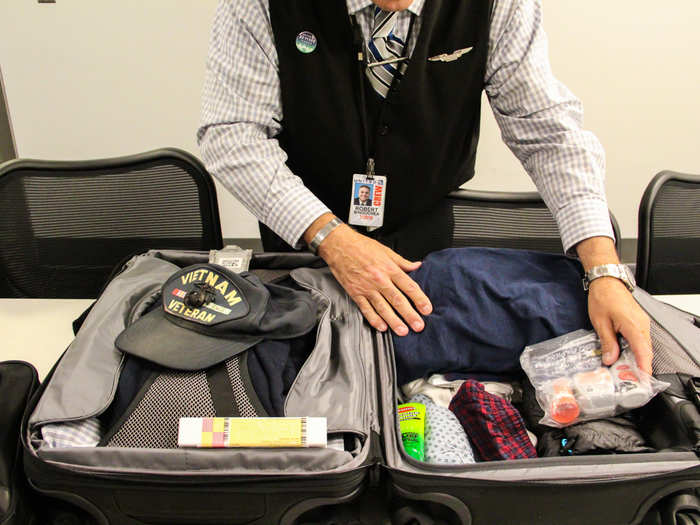
Apart from the essentials like extra underwear and t-shirts, medication, and clothing, he also takes a couple trinkets with him: A pink, rubber frog that was his daughter's when she was younger always goes around the world with him, as well as his Vietnam Veteran cap, which commemorates his time as a medic in the U.S. Army during Vietnam.
In general, Bingochea doesn't pack a lunch. He'll bring some snacks with him, but he opts not to eat while he's working — it makes him sluggish — and instead budgets enough money to try the different cuisines of where he's traveling.
As a passenger, you won't ever see United's operations station. With the swipe of my handler's United Airlines ID badge, we take an elevator up to the fourth floor, home of United's conference rooms, HR and IT departments, and Inflight Services.
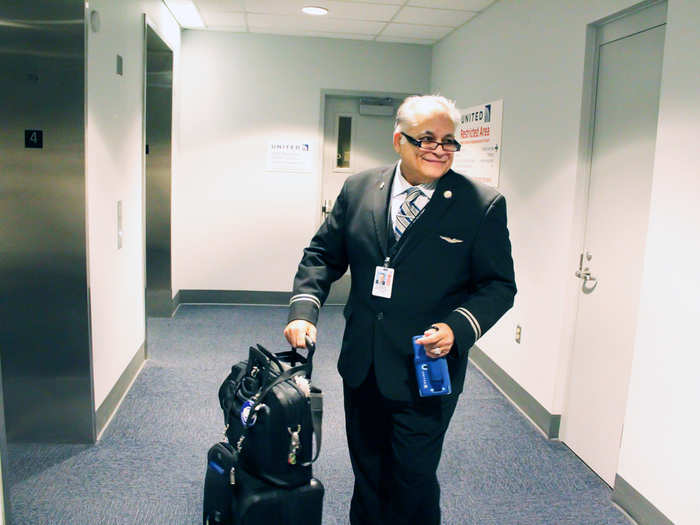
During check in, he lets the staff know he's physically there and ready to go. "They cover their bases because the plane has to be out," he says. "You can't be late. You can't be looking for coffee. You have to be there on time."
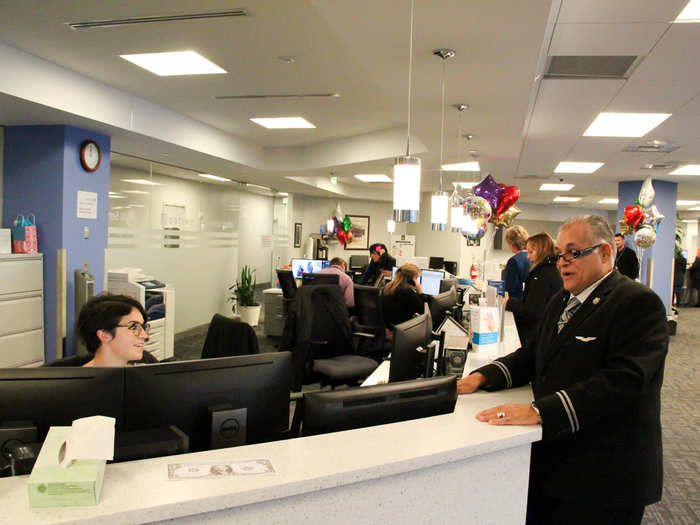
If you're not, United has other flight attendants on standby at the airport as "ready reserves" who will step in if needed. The lounge is their temporary home while they wait to see if they're called for duty. It's equipped with plenty of comfy couches and a darkened sleeping room should flight attendants want to nap …
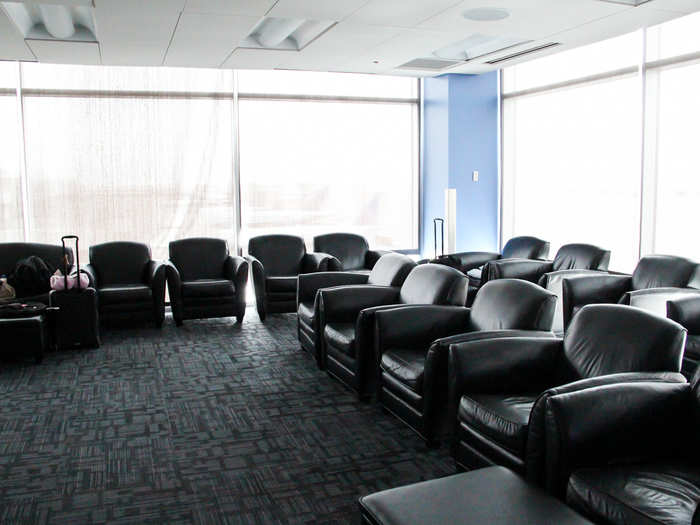
... As well as TVs with flight times, plenty of outlets for charging phones, and a red phone for scheduling. Crew other than those on ready reserve sometimes also use the lounge and sleeping rooms, including "lounge lizards," commuters who don't have anywhere in town to stay between trips and need a place to crash for the night.
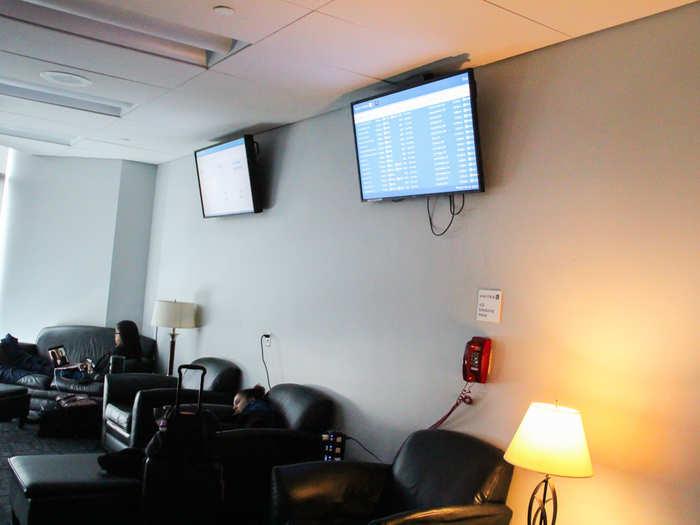
There's also a grooming area with toiletries, irons, and steamers. Though flight attendants aren't officially checked for uniform and grooming compliance before flights, Bingochea recalls a recent instance when he leaned in for a hug with a United executive, who discreetly said to him, "You look good. Get rid of that pocket square."
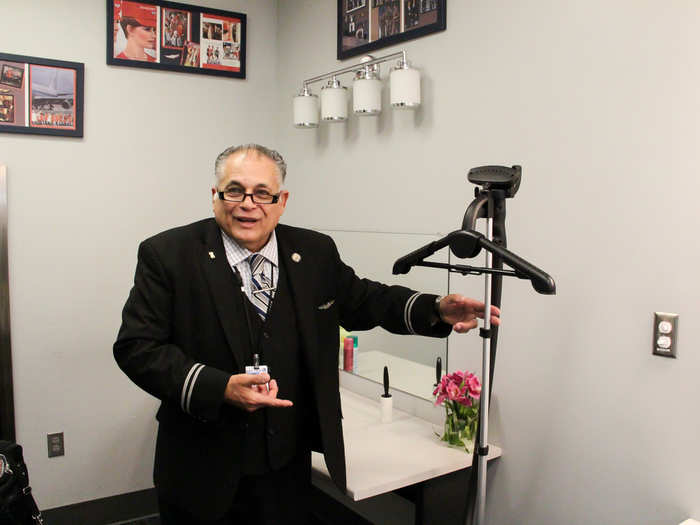
Bingochea says he loves the uniforms and is excited that flight attendants get new ones every few years. "I always like wearing my uniform. I like to make myself available to people," he says. "If people see you in uniform, they'll often say, 'Can I ask you a question?'"
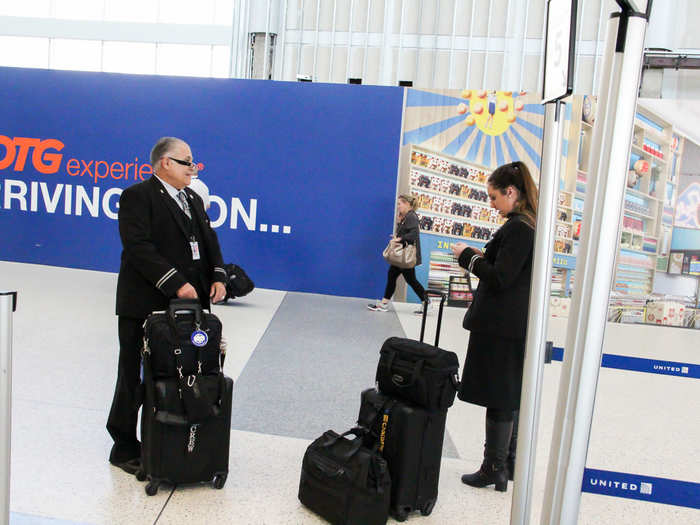
After check in, we head to the gate, and Bingochea scans his United ID to board the plane.
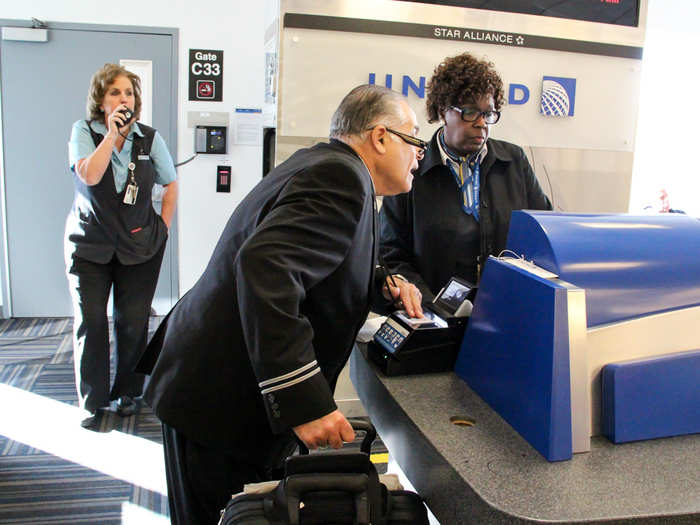
Once Bingochea and his fellow crew members have boarded the plane and stowed their baggage, it's time for the pre-flight briefing. Apart from addressing logistics and procedures, the crew can also get to know each other a little better during pre-flight briefings, as they likely haven't traveled together before.
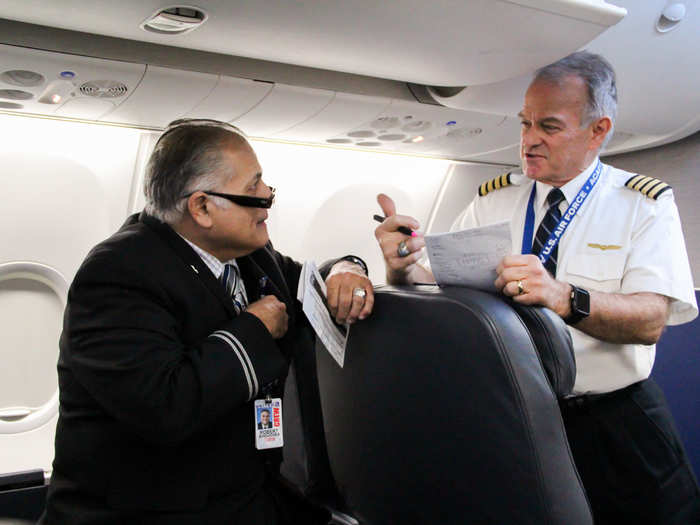
Captain Bob tells the crew that our flight will be two hours and two minutes, so we should arrive at the gate eight minutes early.
It's standard security on this flight, so nobody "special" — meaning people like air marshals, secret service, or federal flight deck officers, who carry weapons — will be on board, and cabin crew will have to rely on able-bodied passengers for help in an emergency.
There won't be any in-flight meals available — just snacks for purchase and beverages.
And — "thankfully" (it's usually stressful for all involved) — no live animals will be on board this flight.
Finally, Bob reminds the cabin crew to let him know if anything out of the ordinary jumps out at them during boarding.
It's time for the flight attendants to do their preflight checks at their assigned crew stations. For our almost 200-passenger flight, there are four flight attendants, two in the front of the plane and two in the back. Since Bingochea is assigned the FA01 position, he's responsible for checking the emergency equipment at his station in the back galley, in the bathroom, and in the overhead bins at the back of the plane.
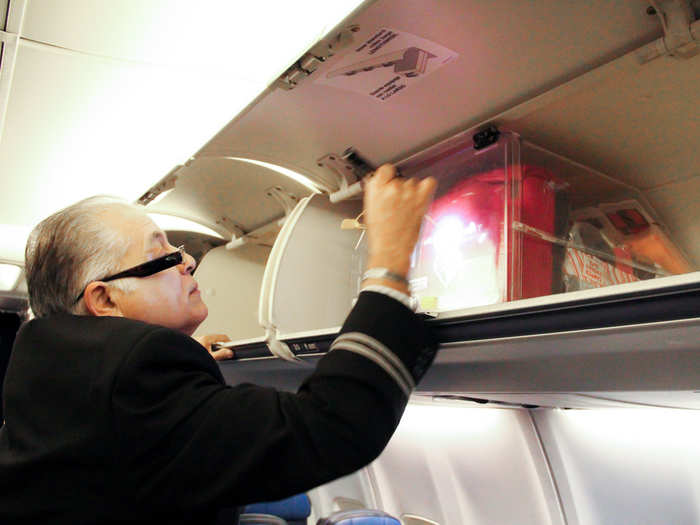
Bingochea also checks the door to ensure it has sufficient pressure should we need to evacuate. He says that, every once in a while, the FAA will take something out of the airplane to see if flight attendants are checking everything thoroughly.
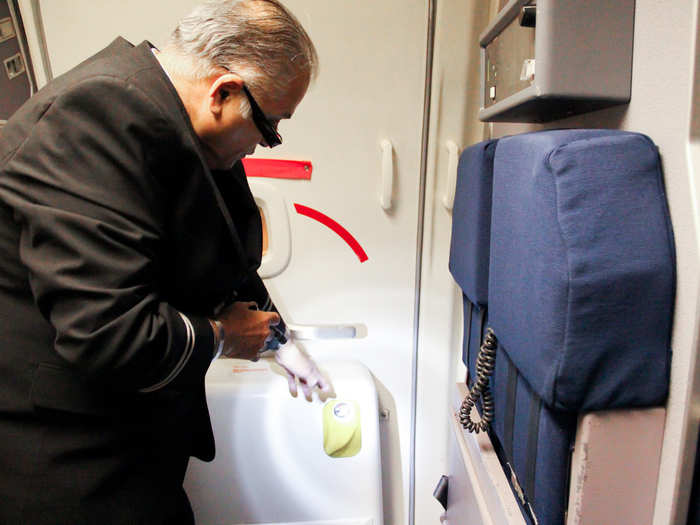
Flight attendants are trained to know every position, Bingochea says. Once you've achieved a certain level of seniority, you can bid for certain trips and positions — although he chooses not to. He says changing positions all the time helps keeps him on his toes, and he doesn't have a preference for class, either. "People are people, whether they're in first class or economy," he says.
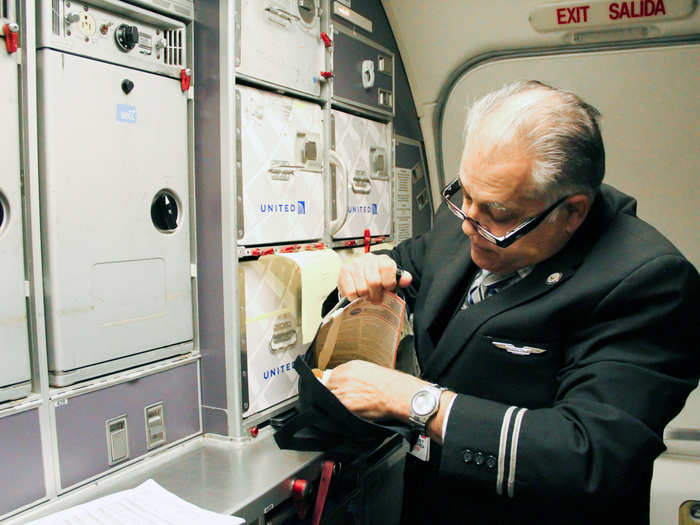
While Bingochea performs his checks, his back-galley partner, Kristine, who is working the FA02 position, checks the galley to make sure food, drinks, and other items are on board and stowed properly.
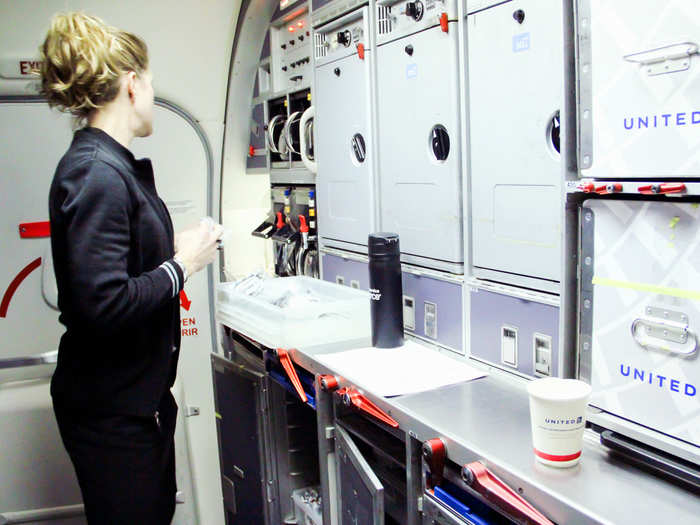
Bingochea and his coworkers have a great deal of information for and about passengers right at their fingertips. If passengers want to upgrade to economy plus during boarding, for example, Bingochea can easily accommodate the request using a proprietary app on his handheld device called Link. He can also use the Link app to check each passenger's reservation, including whether they have a connecting flight they need to make, as well as their flier status, and he also uses the app for food and drink sales.
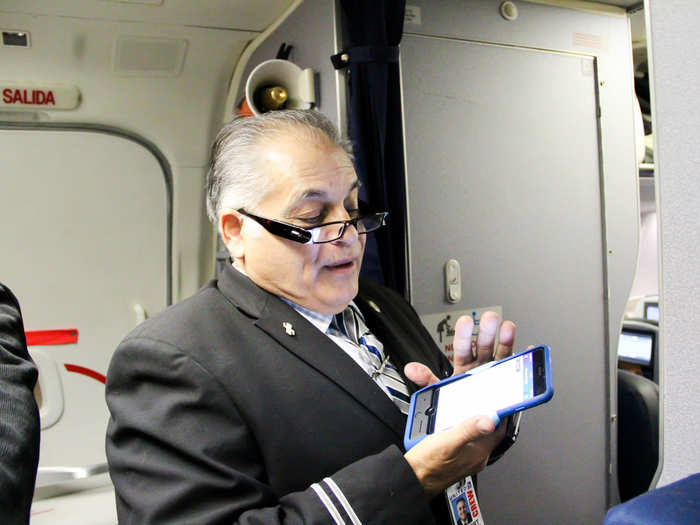
If something does go wrong, Bingochea says flight attendants are empowered with resolution options, from offering a free drink or meal to updating fliers and giving them more points. "We can't fix everything, but at least we can try to give it a chance and try to make things acceptable," he says.
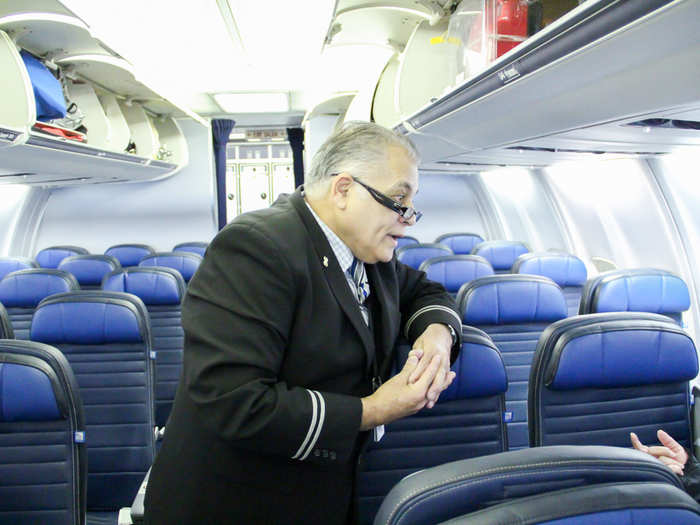
Once the doors close, Bingochea and his fellow flight attendants are finally on the clock. In a series of calls, the head flight attendant lets the rest of the cabin crew and the first officer know that the cabin is ready, the doors are armed, the plane is ready to push back from the gate, and approximately how long the taxi will be.
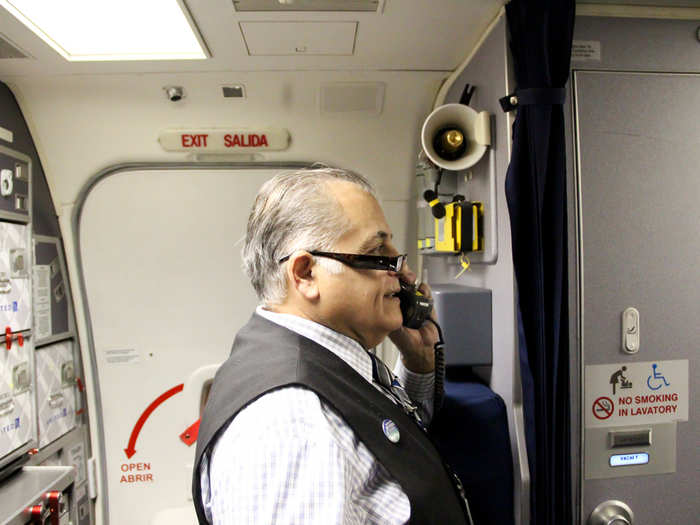
When a passenger gets up to use the bathroom, Bingochea alerts the flight deck.
"Once the aircraft starts moving, there's always the fear of someone falling down, and we're in that position of liability if we don't let the captain know," he says.
Once the passenger exits the bathroom, Bingochea gives the flight deck the all clear to start moving.
"Communication is everything here," Bingochea says. "It has to be paramount, because, as Mr. Munoz said years ago, a series of small mistakes is the beginning of a big mistake."
At this point, it's time for a quick pick-me-up. And, yes, Bingochea drinks the airplane coffee.
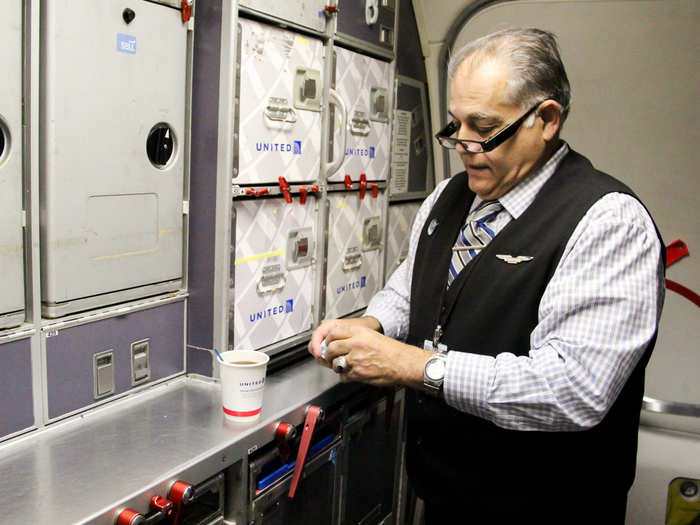
After a safety briefing and a final check to see if seat belts are fastened and personal items are stowed properly, the plane is ready for take off. The captain alerts flight attendants to be seated for departure.
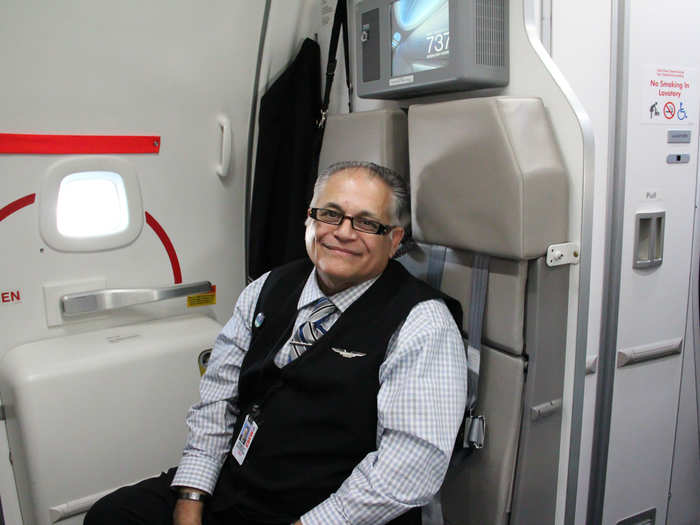
During take off, he says his mind goes to a different place.
"You go through the different situations that can happen in your head," he says.
According to Bingochea, protocol for different emergency situations are embedded in flight attendants from day one of training so that, in an emergency, they don't have to think about it. "It's just there," he says.
Somehow, Bingochea and his colleagues glide up and down the aisles with ease. As I clumsily follow him around for the day, I find it almost impossible not bump into passengers, and I bang my knee hard on an armrest at least once.
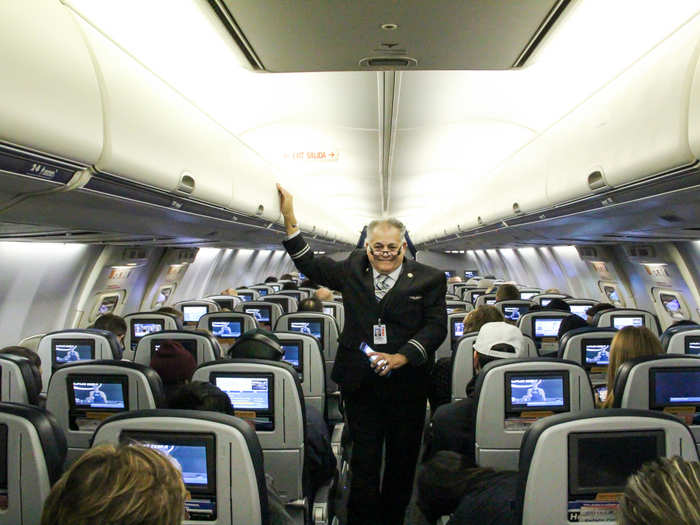
As the plane levels off, Bingochea and Kristine prepare the beverage cart, shuffling around each other and the bar cart in the tiny box that is the galley. Since most passengers are sleeping, they anticipate a fairly easy service of coffee, juice, and water in no more than 20 minutes. On busier day-time flights, it can take an hour to get to all the passengers.
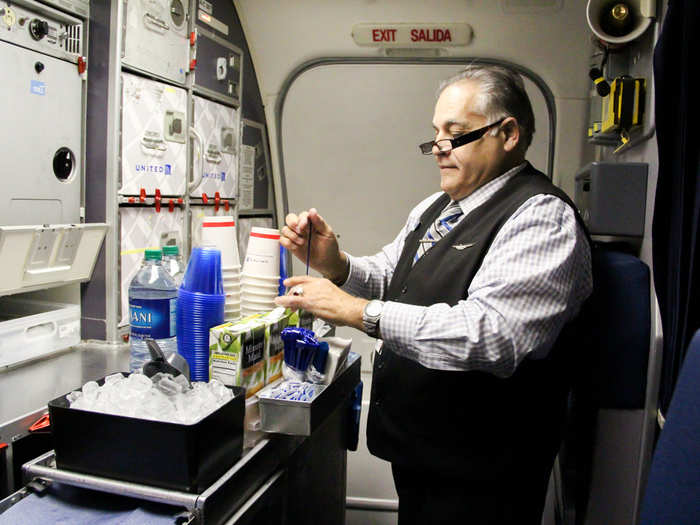
As the plane reaches cruising altitude, Bingochea makes his way through the aisles with drinks, greeting every passenger like an old friend. "We don't know why our customers are going where they're going," he says. "They're traveling, they're on their way to a funeral, they're going for business, going to weddings. We have the whole world on our plane. You make a big difference when you interact with people. People will remember you, either by what you did or what you didn't do."
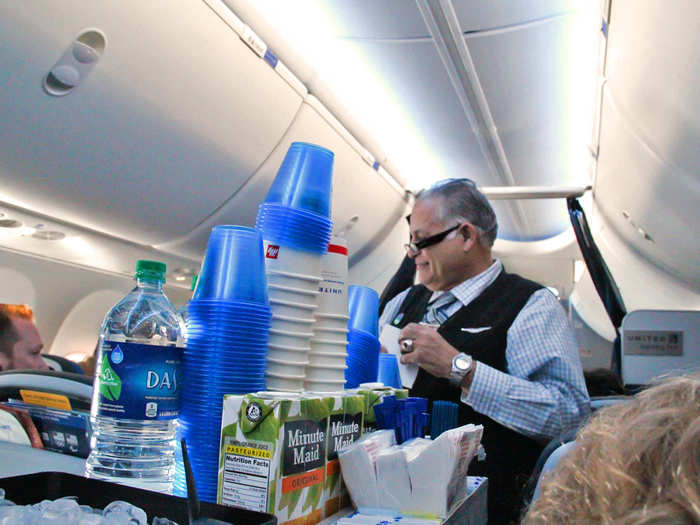
While Bingochea and I are chatting, a passenger interjects, "You're one of the nicest flight attendants I've ever met." To Bingochea, moments like these are everything. "When I hear things like that, that tells me I have a value to this company," he says.

At one point during service, Bingochea asks me how I'm feeling.
As someone who appreciates their sleep, I'm honest: "I feel exhausted," I say. "How do you feel?"
"I could go another 12 hours," he tells me.
Baffled, I ask him how this could be.
"You either want to be here or you don't," he responds. It's the people, he says, that keep him going.
It takes a certain kind of person to be energized by other people. They're what you would call extroverts. It may not be a required skill for the job, but it certainly helps in Bingochea's case.
"This job will test your skills with people. It's not for everybody," he says. Even he has bad days, he admits.
But, he says, "Coming here, you regroup and re-instill your faith in yourself and your fellow man."
And if you can't manage it? "Every time we lose somebody, there are 100 people waiting for this job," Bingochea says.
Once we're below 10,000 feet — which is indicated with a ding everyone aboard the plane can hear — we've entered final descent, and everything has to be buttoned up. Flight attendants make sure the galley is secure, instructing passengers to put their tray tables up, fasten their seatbelt, and return their seats to their upright positions.
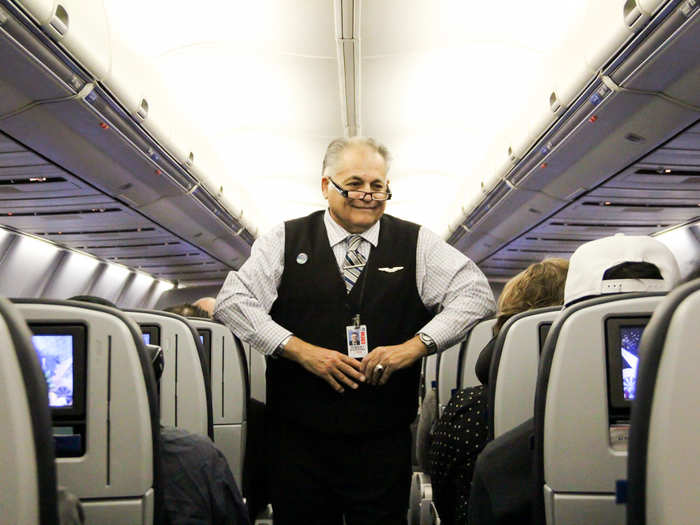
They also perform another safety check in preparation for landing.
"We always go through these silent drills in our mind so, should something happen, we're ready to take on this challenge," Bingochea says.
Final descent is also considered a "sterile period," meaning the flight deck is concentrating on landing the plane, and cabin crew are not to communicate with them during this time.
Once we land and all passengers are off the plane, is time to head to the next gate. This trip is what you would call a quick turn, meaning there's little time between arriving at the airport and heading back out to the skies.
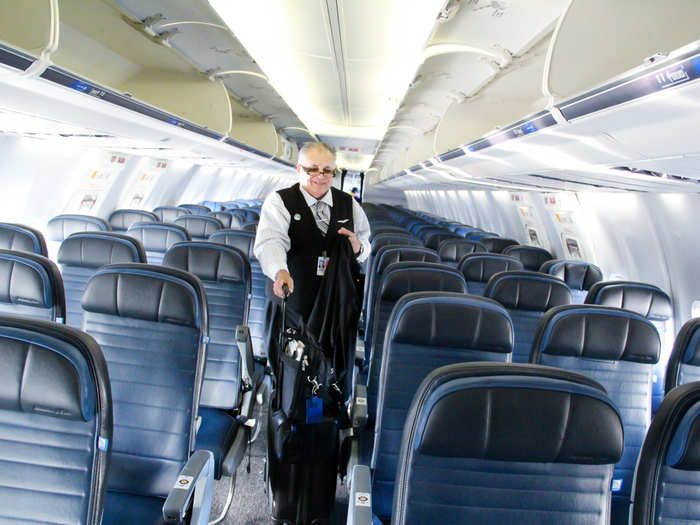
Bingochea's crewmates sprint ahead of us so they can get to Starbucks before our next flight. "If you've been through the airports enough times, you know where you have to be and how long it takes to get there," he says.
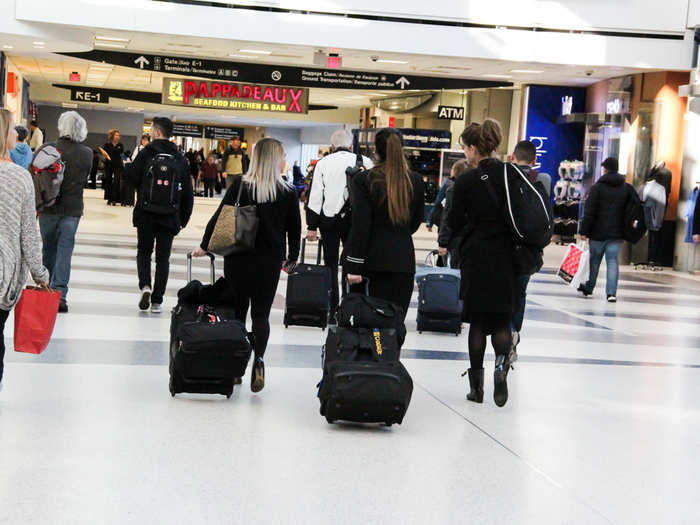
During our march through the airport, Bingochea — in full uniform — gets quite a few looks from passengers and is instantly recognized by an old friend. "This, to me, is the best part of the industry, because you have so much exposure," he says.
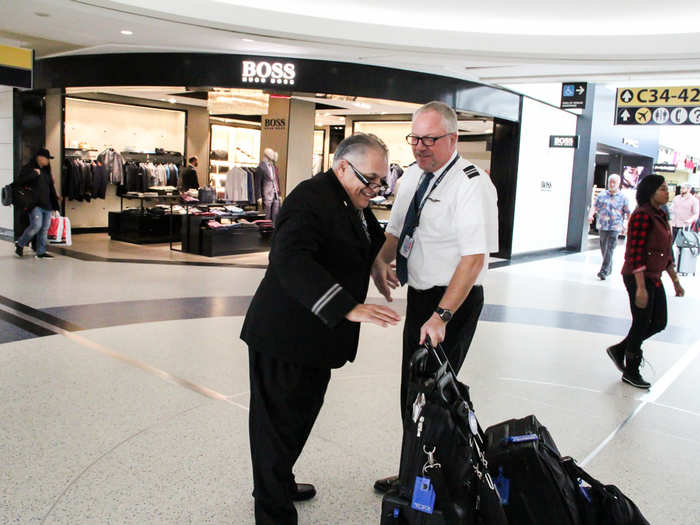
"Once you set foot in this airport, you belong to United," he says. Bingochea explains that you represent the company and the industry any time you put on the uniform, and that visibility comes with a lot of responsibility. "If planes break down, if weather happens, you're on duty, and you're here for the duration of your trip, whether it be a quick turn or three days or four days," he says. "You want to do your job, and do it the best you can."
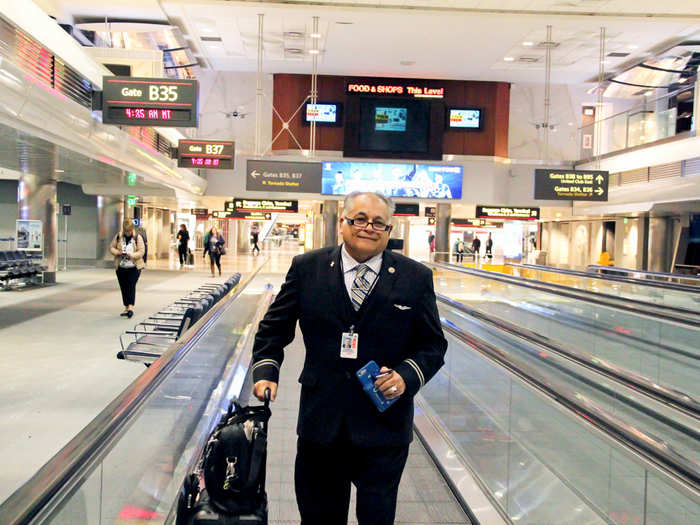
Popular Right Now
Popular Keywords
- India’s wearables market decline
- Vivo V40 Pro vs OnePlus 12R
- Nothing Phone (2a) Plus vs OnePlus Nord 4
- Upcoming smartphones launching in August
- Nothing Phone (2a) review
- Current Location in Google
- Hide Whatsapp Messages
- Phone is hacked or not
- Whatsapp Deleted Messages
- Download photos from Whatsapp
- Instagram Messages
- How to lock facebook profile
- Android 14
- Unfollowed on Instagram
Advertisement